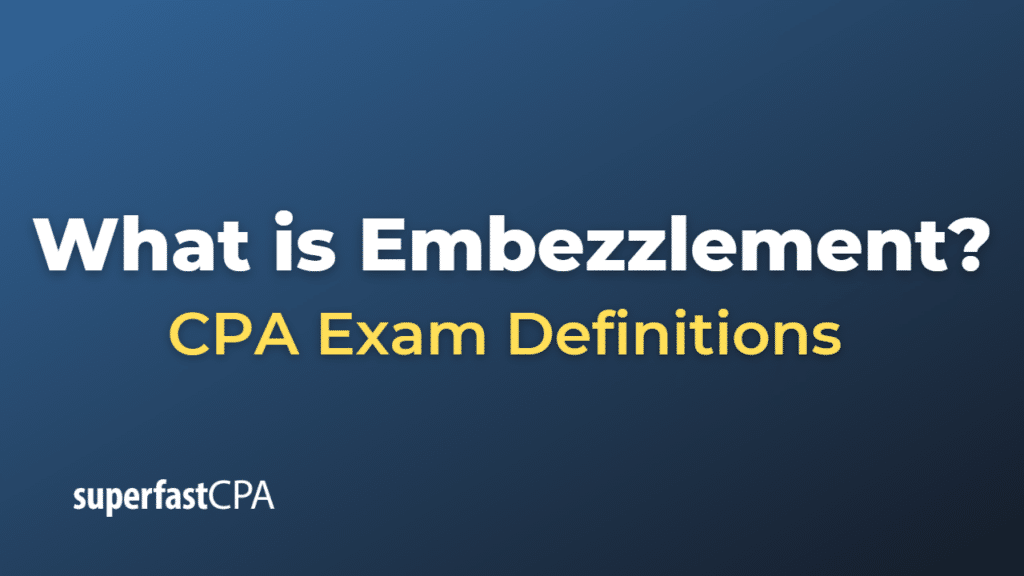Embezzlement
Embezzlement is a type of financial fraud that involves a person who is entrusted with the handling of funds or property illicitly appropriating those funds or property for their personal use. In essence, embezzlement is a breach of the fiduciary responsibilities placed on an individual.
Here’s a simple example: An employee who has access to a company’s petty cash drawer takes money from it for personal use, intending to keep it. This act would be considered embezzlement.
Key characteristics of embezzlement include:
- Trust: The individual committing the embezzlement has been given access to the funds or property because of a position of trust. This could be an employee, a financial advisor, a volunteer handling funds, or even a family member who is managing finances for another relative.
- Misappropriation: The individual must have taken or redirected the funds for their personal use. Simply borrowing the money with the intention to return it can still constitute embezzlement.
- Intent: The individual must have intended to keep the funds permanently.
The severity of an embezzlement crime and its punishment can vary depending on the amount embezzled, the method used, and local laws. It’s considered a white-collar crime and can result in severe penalties, including fines and imprisonment.
Example of Embezzlement
Let’s say Jane works as a bookkeeper for a small business, ABC Company. In her role, she’s responsible for recording all financial transactions, including the money coming in and out of the company.
One day, Jane realizes that she can manipulate the company’s books to her advantage. She begins by taking $500 from the company’s cash reserves and uses it to pay for her personal expenses. To cover her tracks, she records this in the company’s financial system as a payment to a regular supplier.
This goes unnoticed, so she decides to take a little more each month, covering up her theft by recording them as legitimate business expenses. Over time, she manages to embezzle thousands of dollars from the company.
However, during an annual audit, the external auditors notice some irregularities in the company’s financial records and decide to investigate further. After a thorough examination, they discover Jane’s embezzlement scheme.
In this case, Jane has committed embezzlement. She was trusted with the company’s finances, and she abused that trust to take money for her personal use, covering her actions by falsifying the company’s financial records. Depending on the jurisdiction, Jane could face serious legal consequences, including fines and imprisonment.













